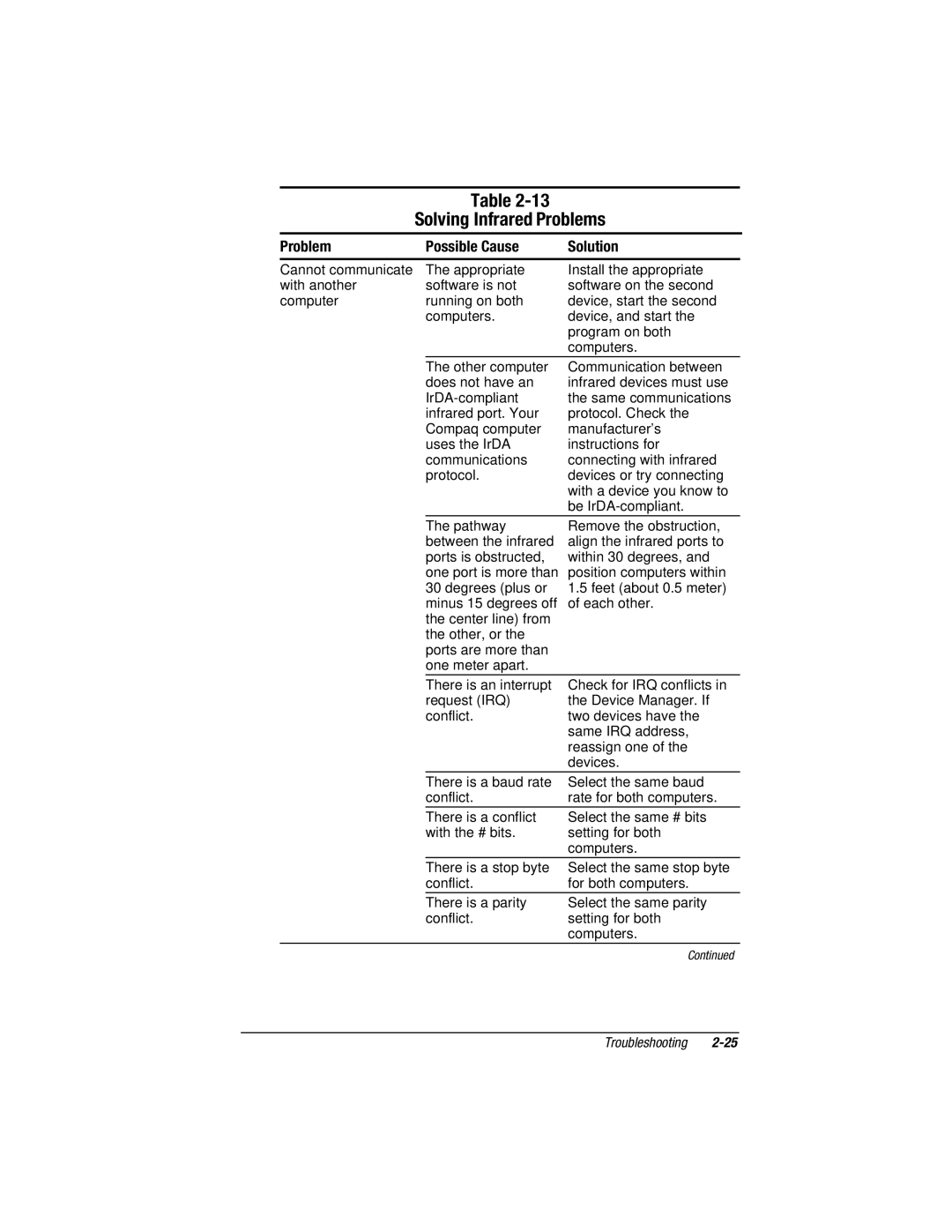
Table
Solving Infrared Problems
Problem | Possible Cause | Solution |
Cannot communicate | The appropriate | Install the appropriate |
with another | software is not | software on the second |
computer | running on both | device, start the second |
| computers. | device, and start the |
|
| program on both |
|
| computers. |
| The other computer | Communication between |
| does not have an | infrared devices must use |
| the same communications | |
| infrared port. Your | protocol. Check the |
| Compaq computer | manufacturer’s |
| uses the IrDA | instructions for |
| communications | connecting with infrared |
| protocol. | devices or try connecting |
|
| with a device you know to |
|
| be |
| The pathway | Remove the obstruction, |
| between the infrared | align the infrared ports to |
| ports is obstructed, | within 30 degrees, and |
| one port is more than | position computers within |
| 30 degrees (plus or | 1.5 feet (about 0.5 meter) |
| minus 15 degrees off | of each other. |
| the center line) from |
|
| the other, or the |
|
| ports are more than |
|
| one meter apart. |
|
| There is an interrupt | Check for IRQ conflicts in |
| request (IRQ) | the Device Manager. If |
| conflict. | two devices have the |
|
| same IRQ address, |
|
| reassign one of the |
|
| devices. |
| There is a baud rate | Select the same baud |
| conflict. | rate for both computers. |
| There is a conflict | Select the same # bits |
| with the # bits. | setting for both |
|
| computers. |
| There is a stop byte | Select the same stop byte |
| conflict. | for both computers. |
| There is a parity | Select the same parity |
| conflict. | setting for both |
|
| computers. |
|
| Continued |
Troubleshooting
